Top Photo: Magicada tredecim, one of two species of periodical cicadas emerging this spring in the Central Piedmont of North Carolina.
You’ve most likely heard about the emergence of two broods of cicadas this spring, Brood XIII and Brood XIX of seventeen year and thirteen year periodical cicadas, respectively. Here in Durham and surrounding counties there is no overlap of the two broods but there are two species emerging at the same time from Brood XIX.
Magicada tredecim and Magicada tredecassini are the two. Briefly, here’s how to tell them apart. If you pick them up and view the ventral abdomen of M. tredecim you will see that it is orange or caramel colored, there is an orange or caramel colored area between the eye and where the wings attach to the body, and they are nearly twice the size of the other species, M. tredecassini.
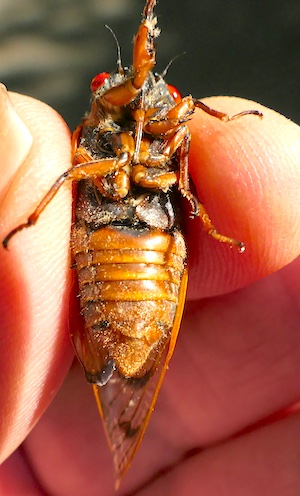

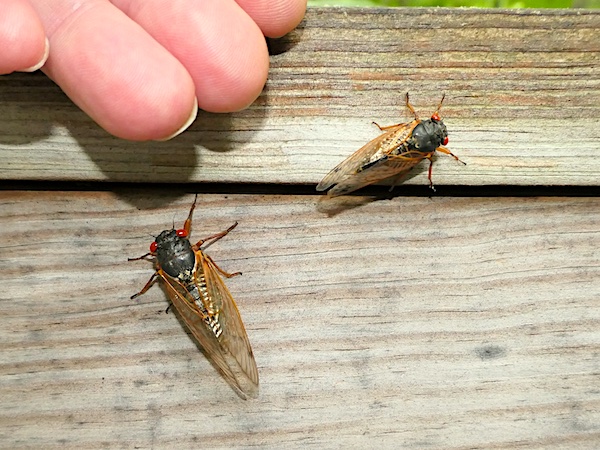
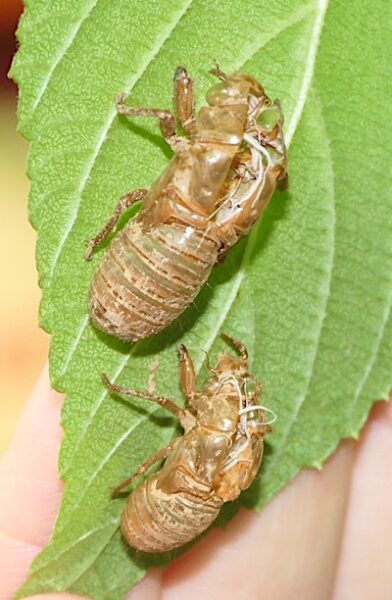
M. tredecassini ventral abdomen is black, it lacks the orange or caramel colored area between the eye and the wing, and, as mentioned, it’s much smaller than M.Tredecim.

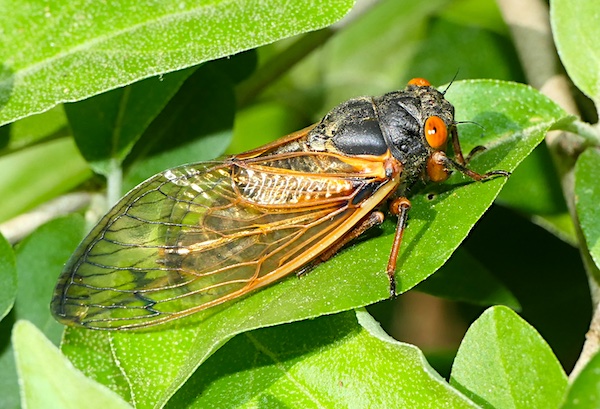
(Their calls are different too, but that’s enough about cicadas for now. We may look deeper in a few weeks.
Elsewhere out around the campus, there’s plenty of other exciting happenings, like the emergence of dragonflies.
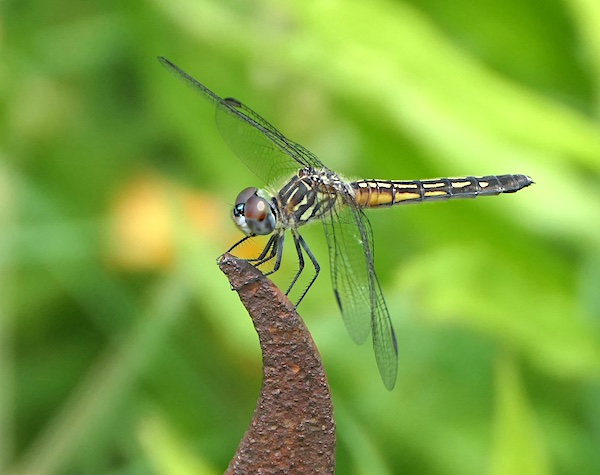
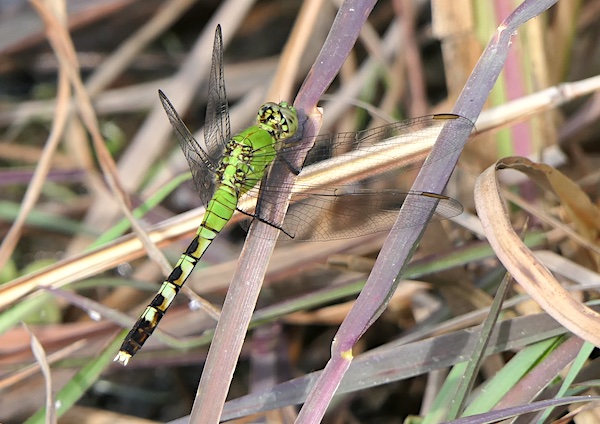
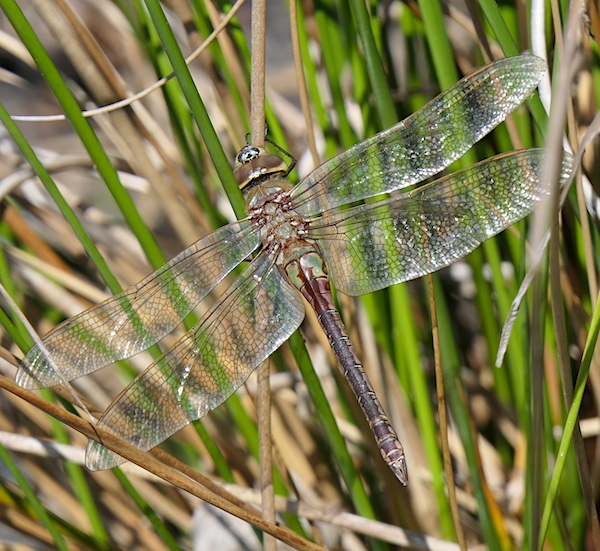
Mulberries have done well this year.

Reptiles and amphibians are presenting themselves too. While walking along the Dinosaur Trail with Rangers Becca and Kade an adult Cope’s gray treefrog landed with a loud “Plop!” on the pavement in front of me.
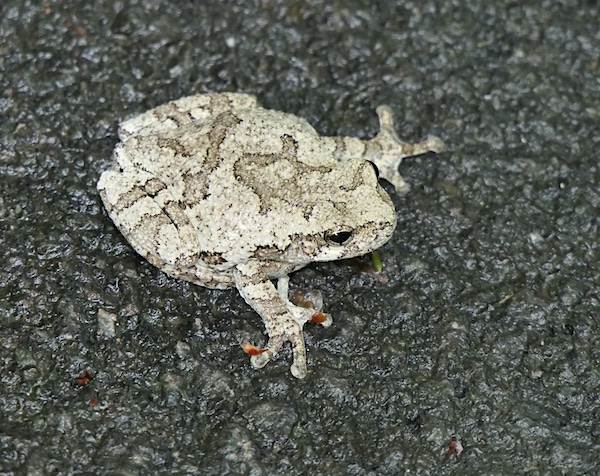
I’m not sure whether the frog fell, miscalculated a jump, or was forced off one of the branches above the path, but had it not made such a loud landing I may have stepped on it. Its landing gave us all opportunities to get some close photos of the tree loving amphibian.
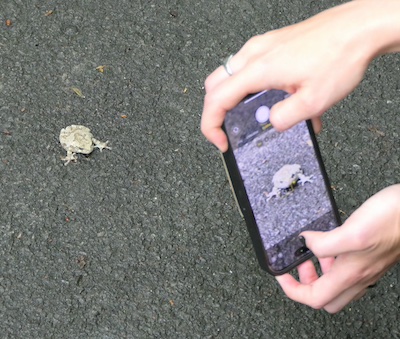

Green tree frogs have been very vocal and visible this past week. There are three “frog pipes” placed at three separate locations on the outdoor loop through the Dino Trail, Explore the Wild, and Catch the Wind. Each is currently housing a tree frog or two during the daylight hours.
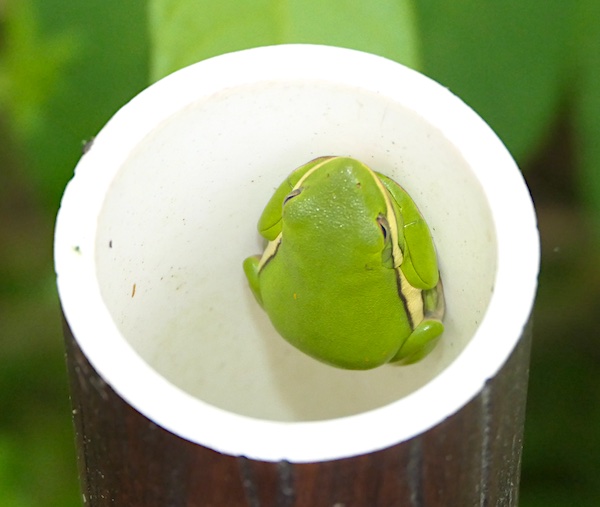
But don’t forget to look under our big green umbrellas while strolling outside.
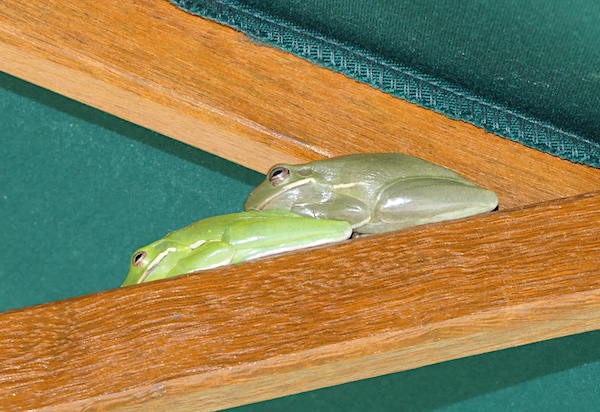
Bullfrogs and other true frogs are beginning to call and be seen wherever there’s water around the campus.
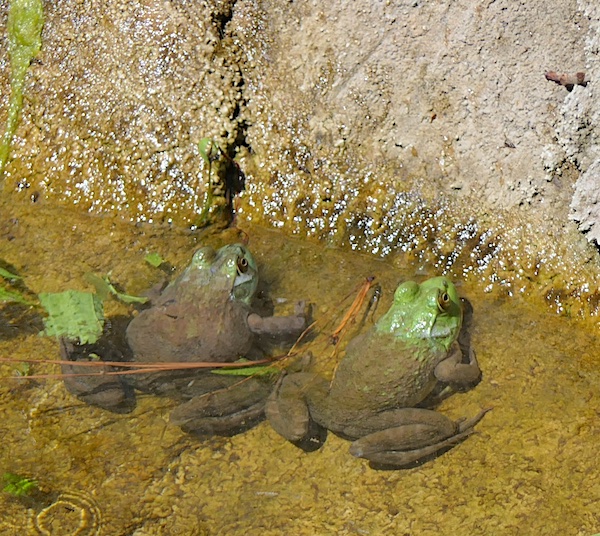
Green anoles have to be included on any roster of outdoor reptiles here at the museum.
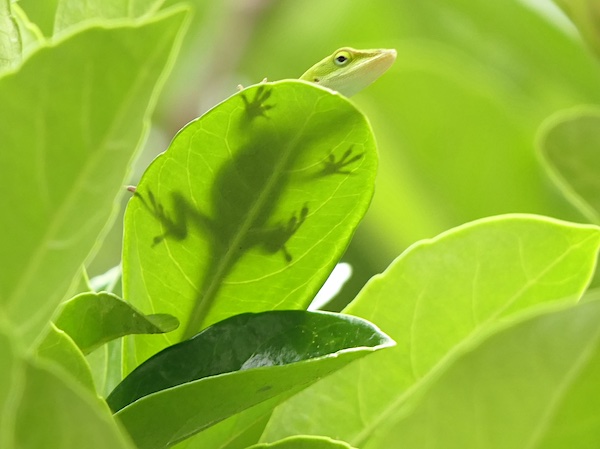
It’s turtle season. Adult turtles are coming ashore to find suitable nesting locations and the results of last year’s nesting are digging out from their subterranean nests and heading towards the wetlands.
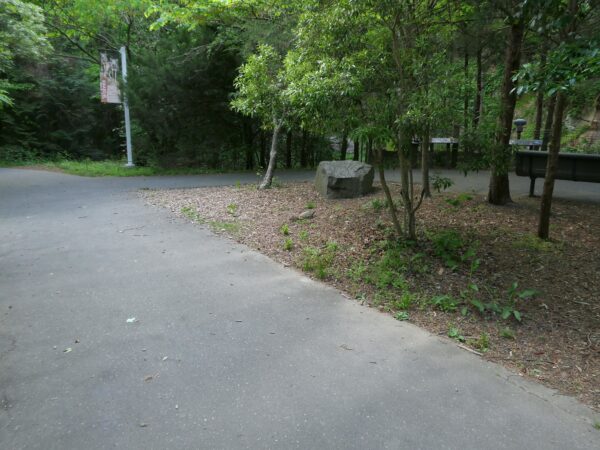
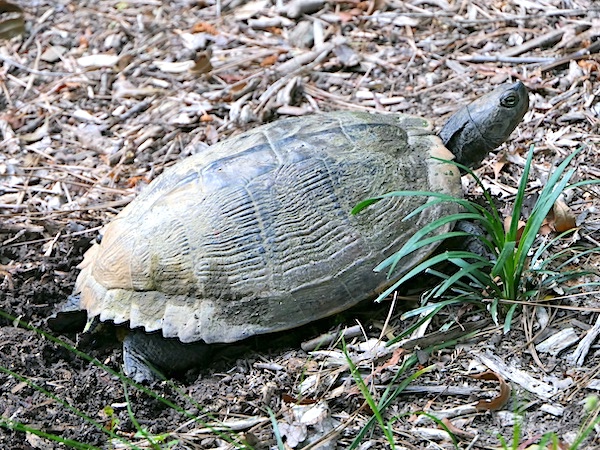
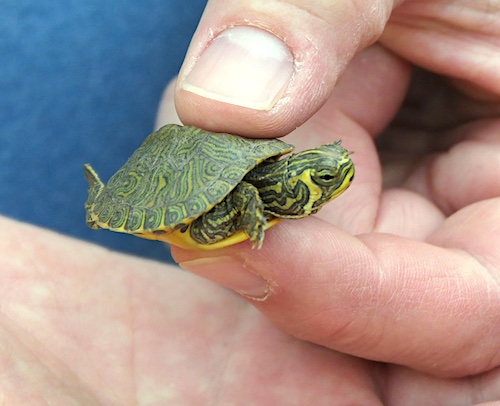
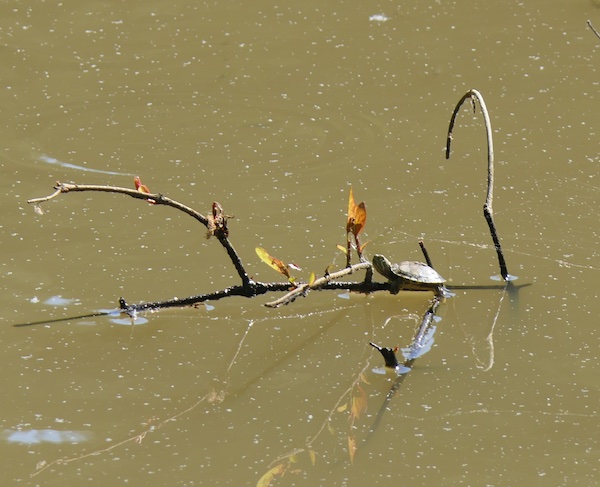
A house finch decided to nest on top of a post supporting an event tent on the west side of the Butterfly House.
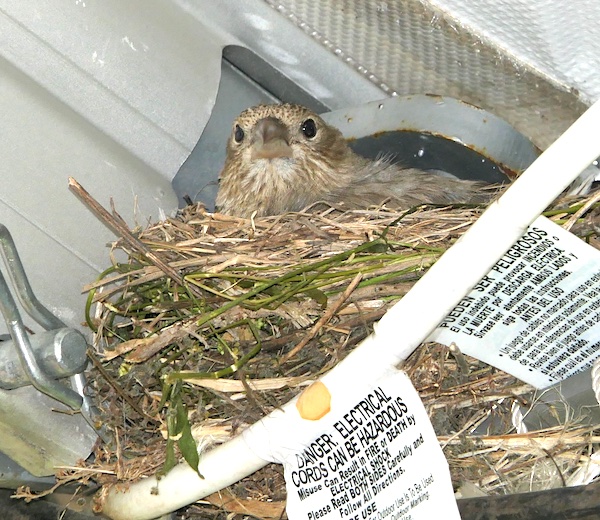
Male zabulon skippers, small grass skippers, tend to repeatedly alight on the same perches while patrolling for rivals and potential mates.
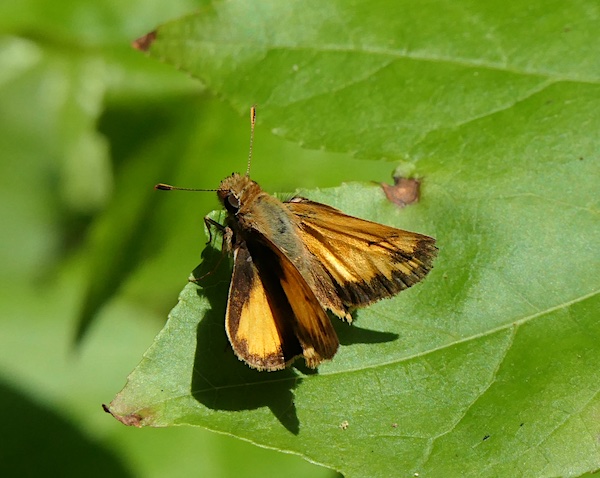
The milkweed in front of the Butterfly House is beginning to come alive, already attracting insects of various types, like the red milkweed beetles below.
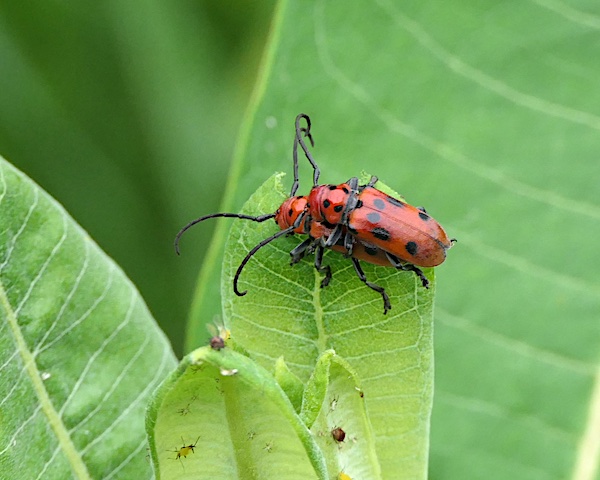
And that’s it for now.
Enjoy!